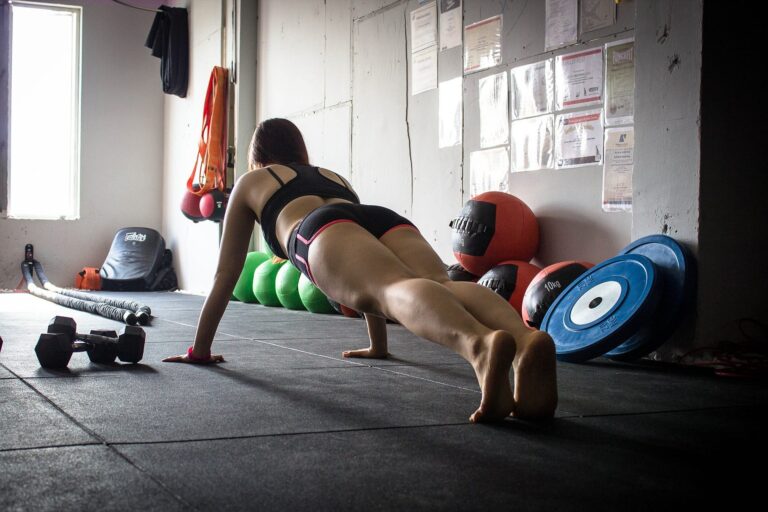The Ultimate Guide to Creating a Personalized Cardio Routine

- Should You Train To Muscle Failure Every Set? What You Need To Know - March 4, 2025
- Nutrition in a Hurry: Top Post-Workout Snacks for Active People - February 20, 2025
- 15 Healthy Meal Prep Recipes: Your Weight Loss Made Easy - February 18, 2025
The Ultimate Guide to Creating a Personalized Cardio Routine” is your go-to resource for tailoring a workout plan that fits your lifestyle, goals, and fitness level. In this comprehensive guide, you’ll uncover the secrets to crafting a cardio regimen that not only boosts your heart health but also keeps you motivated and excited. Whether you’re a beginner or a seasoned athlete, this article equips you with practical tips, expert advice, and customizable templates to ensure your cardio sessions are both effective and enjoyable. Get ready to transform your fitness journey one step, sprint, or spin at a time! Have you ever wondered how to create a personalized cardio training routine that suits your individual needs and goals? Whether you’re a fitness novice or a seasoned athlete, having a tailored plan can make a huge difference in your progress and satisfaction. Cardio training is more than just running on a treadmill or cycling; it’s about building endurance, burning calories, and most importantly, enjoying the process.
In this ultimate guide, we’ll walk you through everything you need to know about creating a personalized cardio training routine. From understanding what cardio training is and its numerous benefits, to assessing your fitness level and setting specific goals, we’ve got you covered. Let’s jump in!

Understanding Cardio Training
To craft a personalized cardio routine, you first need to understand what cardio training is all about. Cardio, short for cardiovascular exercise, focuses on activities that increase your heart rate and improve the overall function of your heart, lungs, and circulatory system.
What is Cardio Training?
Cardio training involves any exercise that gets your heart rate up and keeps it elevated for a period of time. It includes running, walking, cycling, swimming, dancing, and many other activities. Essentially, if it makes you breathe harder and sweat, it can be considered cardio.
Benefits of Cardio Training
Cardio training offers numerous benefits that extend beyond just physical health. Let’s break down some of the key advantages:
- Improves Heart Health: Cardio strengthens the heart and improves its efficiency.
- Burns Calories: A great way to manage weight.
- Enhances Mood: Releases endorphins that make you feel good.
- Boosts Stamina: Increases your endurance over time.
- Regulates Blood Sugar Levels: Helps manage and lower blood sugar.
- Reduces Stress: Acts as a natural mental health booster.
Assessing Your Fitness Level
Before you start designing your cardio routine, it’s crucial to know where you stand in terms of fitness. This will help you create a plan that’s both challenging and achievable.
Methods to Assess Fitness Level
There are various methods to assess your fitness level. Here are a few you can easily do at home:
- Resting Heart Rate: Measure your pulse first thing in the morning.
- VO2 Max: This measures how well your body uses oxygen during exercise.
- 1-Mile Run/Walk Test: Time yourself running or walking a mile.
- Step Test: Step on and off a bench for a set time and then measure your heart rate.
Setting Baseline Measurements
Use these assessments to set your baseline measurements. This will not only help you see where you’re starting but will also give you metrics to track your progress.
Setting Your Goals
Clearly defined goals will guide you through your cardio journey and keep you motivated.
Types of Goals
There are generally two types of goals you’ll want to consider: short-term and long-term.
- Short-Term Goals: These are milestones you aim to achieve within a few weeks or months.
- Long-Term Goals: These are bigger objectives that will take several months or even years to accomplish.
SMART Goals
Your goals should be SMART: Specific, Measurable, Achievable, Relevant, and Time-bound. Here’s an example for better clarity:
- Specific: “I want to run a 5K.”
- Measurable: “I’ll track my running distance and time.”
- Achievable: “I can follow a 5K training plan.”
- Relevant: “Running improves my cardiovascular health.”
- Time-bound: “I want to achieve this in 8 weeks.”
Creating Your Cardio Routine
Now that you know your fitness level and have set your goals, it’s time to build your cardio routine.
Frequency and Duration
How often and how long you should exercise depends on various factors such as your current fitness level and goals.
| Fitness Level | Frequency (Days/Week) | Duration per Session (Minutes) |
|---|---|---|
| Beginner | 3-4 | 20-30 |
| Intermediate | 4-5 | 30-45 |
| Advanced | 5-6 | 45-60 |
Types of Cardio Workouts
There are two main types of cardio workouts: steady-state and high-intensity interval training (HIIT).
- Steady-State Cardio: Involves exercising at a consistent, moderate pace. Examples include jogging, swimming, and cycling.
- HIIT: Involves short bursts of intense activity followed by rest periods. Examples include sprinting and circuit training.
Creating a Balanced Routine
A balanced cardio routine should include a mix of both steady-state and HIIT workouts. Here’s a sample weekly plan for an intermediate-level individual:
| Day | Workout Type | Activity |
|---|---|---|
| Monday | Steady-State | 30-minute jog |
| Tuesday | HIIT | 20-minute sprint intervals |
| Wednesday | Steady-State | 45-minute cycling |
| Thursday | Rest | |
| Friday | HIIT | 25-minute circuit training |
| Saturday | Steady-State | 40-minute swimming |
| Sunday | Rest or Light Activity | Light yoga or gentle walk |

Incorporating Variety
One of the keys to staying motivated is to keep your workouts interesting. Incorporating different types of cardio can prevent monotony and work different muscle groups.
Options for Different Activities
- Running/Jogging: Great for outdoor lovers.
- Cycling: This can be done indoors on a stationary bike or outdoors.
- Swimming: Full-body workout, excellent for those with joint issues.
- Dancing: A fun way to exercise, can be done in a class or at home.
- Rowing: Low-impact but highly effective cardio.
Cross-Training
Cross-training involves participating in a variety of activities to improve overall fitness. This can reduce the risk of injury and keep things exciting.
Monitoring Progress
Keeping track of your progress is essential for staying motivated and making necessary adjustments to your routine.
Tools for Monitoring
There are plenty of tools and apps available to help you track your cardio workouts:
- Fitness Apps: Strava, MyFitnessPal, and Nike Run Club.
- Wearables: Fitbit, Apple Watch, Garmin.
- Journals: Keeping a written log of your workouts.
Periodic Assessments
Regularly assessing your fitness can help you see improvements and adjust your routine as needed. Aim to reassess every 4-6 weeks.

Nutrition and Hydration
Cardio training can be demanding, and your body needs the right fuel to perform and recover.
Pre-Workout Nutrition
Eating the right foods before your workout can enhance your performance. Aim to consume a mix of protein and carbohydrates about 30 minutes to an hour before you exercise.
Post-Workout Nutrition
After your workout, it’s important to refuel your body. Focus on a combination of proteins to repair muscles and carbohydrates to replenish glycogen stores.
Hydration
Staying hydrated is crucial. Drink water before, during, and after your workouts to maintain optimal performance and recovery.
Rest and Recovery
Rest and recovery are just as important as the workouts themselves. Overtraining can lead to injuries and burnout.
Importance of Rest Days
Incorporate at least one or two rest days into your weekly routine to allow your muscles to repair and grow.
Active Recovery
On rest days, consider engaging in light activities like yoga, stretching, or a gentle walk. This can improve circulation and help in muscle recovery.
Staying Motivated
Staying motivated can sometimes be a challenge, especially during long-term training.
Finding a Workout Buddy
Having a workout buddy can make your sessions more enjoyable and hold you accountable.
Setting Mini-Challenges
Create mini-challenges for yourself to keep things interesting. This could be something like improving your mile time or trying a new type of cardio each month.
Rewarding Yourself
Set up a reward system for reaching your goals. This could be as simple as treating yourself to a massage or buying new workout gear.
Safety Tips
Last but not least, it’s important to keep safety in mind while training.
Warm-Up and Cool-Down
Always start with a warm-up and finish with a cool-down to prepare your body for exercise and prevent injuries.
Listening to Your Body
Pay attention to how your body feels during and after workouts. Don’t ignore pain or discomfort; it’s your body’s way of telling you that something might be wrong.
Conclusion
Creating a personalized cardio training routine doesn’t have to be complicated, but it does require some thoughtful planning. By understanding the basics of cardio training, assessing your fitness level, setting clear goals, and incorporating variety into your workouts, you can create an effective and enjoyable routine tailored just for you. Remember to monitor your progress, prioritize nutrition and hydration, respect the need for rest, and keep safety in mind.
Embark on your cardio journey with confidence, knowing that you have the tools and knowledge to succeed. Happy training!
Table of Contents







